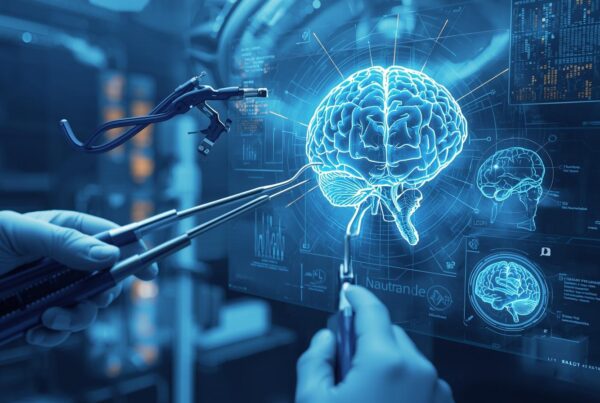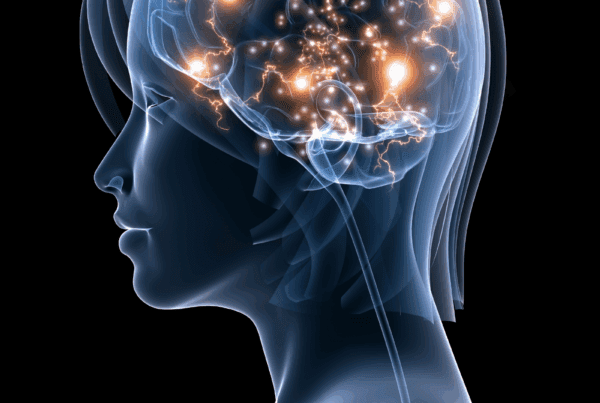With over two decades of experience as a leading neurosurgeon, Dr Timothy Steel brings extensive expertise to the complex topic of head injuries.
In recent years, concerns about the long-term impact of sports-related concussions have grown significantly, with media coverage often blurring the line between established medical facts and speculation. As public interest in this issue continues to increase, there’s a need for clear, evidence-based information.
In the interview below, Dr Steel shares his professional perspective on concussion injuries, their diagnosis, and the current understanding of long-term effects. He draws on his extensive clinical experience and medical knowledge to address some of the most pressing questions in this field.
Expert Q&A: Understanding Concussions
The following Q&A expands on key points from Dr Steel’s interview, providing additional context and detailed information on sports-related concussions and their potential long-term effects.
Q: What exactly happens to the brain during a sports-related concussion?
A: A concussion is, by definition, a traumatic brain injury. When an impact occurs, the brain – which is mobile inside the skull – can bounce against the skull wall and sustain bruising. This typically occurs in the frontal areas with frontal impacts. Just as you can bruise your arm, you can bruise your brain. With a hard enough impact, bruising typically occurs in the frontal areas and occasionally in the back areas, depending on the direction of impact.
Q: Why is it important to wait before returning to play after a concussion?
A: Just as if you had a big bruise in your leg that was causing difficulty walking, you wouldn’t want to play on that until the bruising had fully settled. Similarly, after a significant head injury, you need a period of time to avoid further injury so you don’t exacerbate the bruising before it’s healed. Returning too soon risks compounding the initial injury.
Q: How long does it typically take to recover from a sports concussion?
A: Bruising from any sort of injury typically takes about 4 to 6 weeks before it fully resolves. After a significant head injury, one would require a period of downtime to avoid any further injury so that you don’t exacerbate the bruising until it’s healed. This recovery timeline is similar to how you would treat a significant bruise elsewhere in the body.
Q: What’s the most accurate way to diagnose the severity of a concussion?
A: The only real way of diagnosing concussion damage is with an MRI scan, as it will show even a tiny amount of bruising. If we were going to be serious about assessing athletes with head injuries, an early MRI scan after the contact would be mandatory.
Q: Have recent changes in sports protocols helped address concussion risks?
A: There’s been widespread implementation of concussion protocols in sports, which began with American football and since come to Australia. Anything that contributes to athletes looking after their heads and caring about brain health is very valuable. These protocols have significantly changed how we approach head injuries in contact sports.
Q: Is there definitive evidence linking multiple concussions in sports to long-term brain disease?
A: There’s been the recent diagnosis of post-concussive traumatic encephalopathy (CTE), which was initially identified in American footballers. Where it becomes less certain is the idea that traumatic scarring can cause a progressive neurological deficit later in life. There is no established pathology that says a traumatic injury at the age of 20 will cause neurological deterioration when you’re 50.
Q: If someone had concussions during their sporting career but finished playing without symptoms, should they be concerned about developing problems years later?
A: If you finish your playing days and you’re neurologically fine, then developing neurological symptoms ten years later is probably not related to the trauma you had before. Neurological deterioration can occur through multiple different reasons—conditions such as Parkinson’s disease, dementia, effects of substance use, or even symptoms of anxiety and more psychological issues can all impact neurological function at a later stage.
Q: How did American football’s approach to tackling contribute to concussion issues?
A: When I worked at the University of Washington, I observed that American footballers were instructed to hit with the crown of their helmet. With players weighing 200-300 pounds, that’s a huge amount of force. This technique meant they were using their helmets as weapons, which significantly increased the risk of brain injuries. This approach to tackling is very different from how we teach contact in Australian sports today.


